price anchoring
description: use of the anchoring effect in making a price seem more acceptable to potential buyers
56 results

Priceless: The Myth of Fair Value (And How to Take Advantage of It)
by
William Poundstone
Published 1 Jan 2010
From there the gaze usually moves down to the center of the right page. Menu consultants use these prime menu spaces for high-profit items and price anchors. In this case, the anchor is the Le Balthazar seafood plate, for $110. Psychophysics says that the contrast effect is strongest in the immediate vicinity of a stimulus. It’s anyone’s guess whether this applies to prices on menus, but consultants seem to believe it does. They recommend putting high-profit items immediately adjacent to the high-priced anchor. The real agenda of the $110 price is probably to induce customers to spring for the $65 Le Grand plate just to the left of it or the more modest seafood orders below it.
…
The peeves included “discovering you purchased a spoiled carton of milk,” “forgetting to return a video and having to pay a fine,” “having your ice cream fall on the floor,” and seven other items. Overall, the annoying sound came in #2 on the list, behind “missing your bus by a few seconds.” The telling thing is this. The 10- and 50-cent price anchors had no effect on the ranking of the annoying noise. Everyone approximately agreed on how bad the noise was, relative to life’s other little annoyances. Another group of volunteers consented to put a finger in a vise. The experimenter tightened the vise until the subject said he was beginning to experience pain (the “pain threshold”).
…
It paid over $1,700 per square foot for its Rem Koolhaas–designed store in SoHo and is forking over equally stratospheric rents. It would not devote floor space to goods that hardly ever sell unless there was a reason for it. Trade-off contrast is part of the cost of doing business, like advertising or window displays or “starchitect” designs. It’s not unusual to find items similar to the high-priced anchor selling for a tenth as much. Anyone who can’t swing that can always try the $300 sunglasses. Or the $110 mobile phone charm. The British Prada website hints at where the money is (online, at any rate). It offers 10 makes of women’s shoes, 23 handbags, and 54 “gifts”—trinkets like keychains, bracelet charms, and golf tee holders.

Predictably Irrational, Revised and Expanded Edition: The Hidden Forces That Shape Our Decisions
by
Dan Ariely
Published 19 Feb 2007
Thus the first anchor influences not only the immediate buying decision but many others that follow. We might see a 57-inch LCD high-definition television on sale for $3,000, for instance. The price tag is not the anchor. But if we decide to buy it (or seriously contemplate buying it) at that price, then the decision becomes our anchor henceforth in terms of LCD television sets. That’s our peg in the ground, and from then on—whether we shop for another set or merely have a conversation at a backyard cookout—all other high-definition televisions are judged relative to that price. Anchoring influences all kinds of purchases. Uri Simonsohn (a professor at the University of Pennsylvania) and George Loewenstein, for example, found that people who move to a new city generally remain anchored to the prices they paid for housing in their former city.
…
The same basic principle would also apply if the government one day decided to impose a tax that doubled the price of gasoline. Under conventional economic theory, this should cut demand. But would it? Certainly, people would initially compare the new prices with their anchor, would be flabbergasted by the new prices, and so might pull back on their gasoline consumption and maybe even get a hybrid car. But over the long run, and once consumers readjusted to the new price and the new anchors ( just as we adjust to the price of Nike sneakers, bottled water, and everything else), our gasoline consumption, at the new price, might in fact get close to the pretax level. Moreover, much as in the example of Starbucks, this process of readjustment could be accelerated if the price change were to also be accompanied by other changes, such as a new grade of gas, or a new type of fuel (such as corn-based ethanol fuel).
…
And more importantly, does that price (which in academic lingo we call an anchor) have a long-term effect on our willingness to pay for the product from then on? It seems that what’s good for the goose is good for humans as well. And this includes anchoring. From the beginning, for instance, Assael “anchored” his pearls to the finest gems in the world—and the prices followed forever after. Similarly, once we buy a new product at a particular price, we become anchored to that price. But how exactly does this work? Why do we accept anchors? Consider this: if I asked you for the last two digits of your social security number (mine are 79), then asked you whether you would pay this number in dollars (for me this would be $79) for a particular bottle of Côtes du Rhône 1998, would the mere suggestion of that number influence how much you would be willing to spend on wine?
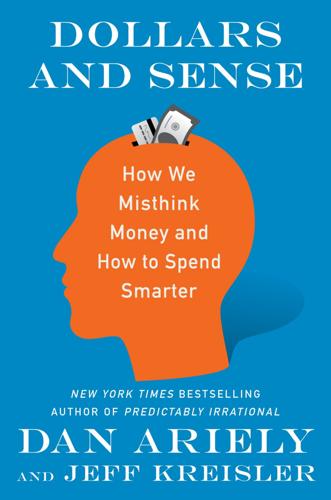
Dollars and Sense: How We Misthink Money and How to Spend Smarter
by
Dr. Dan Ariely
and
Jeff Kreisler
Published 7 Nov 2017
The MSRP is an example of an external anchor—that is, the auto manufacturer planting the notion that the car we lust after costs $35,000. The soda price is an internal anchor, coming from our own previous experience buying Coke, Diet Coke, or New Double Diet New Caffeine Free Cherry Coke Zero . . . with Lime. The effects of these two types of anchors on our decisions are basically the same.5 In fact, not much matters about where the anchor comes from. If we consider buying something at that price, the anchoring effect has been set. The number can even be completely random and arbitrary. Our favorite anchoring experiments were carried out by Drazen Prelec, George Loewenstein, and Dan.
…
Even if there’s a place offering free coffee while we wait for our $25 oil change. This is how anchoring starts with a single decision, but then grows through self-herding to become a bigger problem, creating a perpetual cycle of self-delusion, fallacy, and incorrect valuation. We purchase a widget at a certain price because of a suggested price—an anchor. Then that purchase price becomes evidence that this was a good decision. From that point on it becomes the starting point for our future purchases of similar widgets. Another value-manipulating cue that is a close relative of anchoring and self-herding is CONFIRMATION BIAS. Confirmation bias pops its head up when we interpret new information in a way that confirms our own preconceptions and expectations.
…
This is also equivalent to fifty-four half-hour television episodes, which would cost $53.46 to stream at 99 cents each. When we look at it this way, $13.50 for twenty-seven hours of fun doesn’t seem like a bad deal. The problem is that we don’t do this exercise—or anything like it. Rather, we compare this app to other apps on price alone—a price that’s been anchored to zero. As a consequence, we end up spending our money in ways that don’t maximize our pleasure and may not make financial sense. IGNORANCE IS BLISS The less we know about something, the more we depend on anchors. Consider once again our real estate example, where real estate agents and “regular people” in Tucson were shown anchor prices and then asked to assess the value of the home.

The Irrational Bundle
by
Dan Ariely
Published 3 Apr 2013
Thus the first anchor influences not only the immediate buying decision but many others that follow. We might see a 57-inch LCD high-definition television on sale for $3,000, for instance. The price tag is not the anchor. But if we decide to buy it (or seriously contemplate buying it) at that price, then the decision becomes our anchor henceforth in terms of LCD television sets. That’s our peg in the ground, and from then on—whether we shop for another set or merely have a conversation at a backyard cookout—all other high-definition televisions are judged relative to that price. Anchoring influences all kinds of purchases. Uri Simonsohn (a professor at the University of Pennsylvania) and George Loewenstein, for example, found that people who move to a new city generally remain anchored to the prices they paid for housing in their former city.
…
The same basic principle would also apply if the government one day decided to impose a tax that doubled the price of gasoline. Under conventional economic theory, this should cut demand. But would it? Certainly, people would initially compare the new prices with their anchor, would be flabbergasted by the new prices, and so might pull back on their gasoline consumption and maybe even get a hybrid car. But over the long run, and once consumers readjusted to the new price and the new anchors (just as we adjust to the price of Nike sneakers, bottled water, and everything else), our gasoline consumption, at the new price, might in fact get close to the pretax level. Moreover, much as in the example of Starbucks, this process of readjustment could be accelerated if the price change were to also be accompanied by other changes, such as a new grade of gas, or a new type of fuel (such as corn-based ethanol fuel).
…
And more importantly, does that price (which in academic lingo we call an anchor) have a long-term effect on our willingness to pay for the product from then on? It seems that what’s good for the goose is good for humans as well. And this includes anchoring. From the beginning, for instance, Assael “anchored” his pearls to the finest gems in the world—and the prices followed forever after. Similarly, once we buy a new product at a particular price, we become anchored to that price. But how exactly does this work? Why do we accept anchors? Consider this: if I asked you for the last two digits of your social security number (mine are 79), then asked you whether you would pay this number in dollars (for me this would be $79) for a particular bottle of Côtes du Rhône 1998, would the mere suggestion of that number influence how much you would be willing to spend on wine?
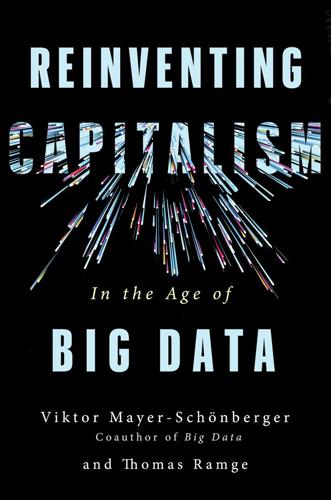
Reinventing Capitalism in the Age of Big Data
by
Viktor Mayer-Schönberger
and
Thomas Ramge
Published 27 Feb 2018
Prices ending in nines: Even if policy makers prohibit prices ending in nine, recent research has shown that the market adjusts quickly to the restriction and shifts from prices ending in ninety-nine to prices ending in ninety, with the same deceiving effect on consumers; see Avichai Snir, Daniel Levy, and Haipeng Chen, “End of 9-Endings, Price Recall, and Price Perceptions,” Economics Letters, forthcoming (posted April 2, 2017), https://ssrn.com/abstract=2944919. “under $1,000, which is code for $999”: Matthew Amster-Burton, “Price Anchoring, or Why a $499 iPad Seems Inexpensive,” Mint-Life, April 6, 2010, https://blog.mint.com/how-to/price-anchoring. sellers often use price to deliberately obscure information: Authors’ conversation with Florian Bauer, December 19, 2016. CHAPTER 4: DATA-RICH MARKETS “Nothing anyone does will seem that crazy”: Olivia Solon, “Oh the Humanity! Poker Computer Trounces Humans in Big Step for AI,” Guardian, January 30, 2017, https://www.theguardian.com/technology/2017/jan/30/libratus-poker-artificial-intelligence-professional-human-players-competition.

Evil by Design: Interaction Design to Lead Us Into Temptation
by
Chris Nodder
Published 4 Jun 2013
They never used the word “Sale,” just the term “New Price.” Thus, they managed to set a new anchor point for many customers that was actually higher than the previous product price. How to own the anchor For a high-end anchor: Show a range of comparable products, with the most expensive setting a high-end anchor price sufficiently large to make the rest of your products look cheap by comparison. Make frequent comparison to the high-end anchor when describing other products’ prices. For a low-end anchor: Show a range of comparable products, with the cheapest setting the lowest price that you are comfortable with. Ensure that the low-end anchor price does not deviate substantially from customers’ expectations, or that comparison with other vendors is difficult.
…
Anchoring and arbitrary coherence The gas tank needle is on empty, but we drive right past a couple of gas stations simply because their prices are more expensive than what we paid the last time we filled up. It’s only when the car is running on fumes that we realize maybe we will have to fork over more cash than we want to. What has happened? We formed an opinion on the price of gasoline (an anchor) when we last filled up. Now we compare the new prices that we see against this anchor. We are looking for coherence between the new price and the last price we paid. With a product that varies in price over time and over location, it’s hardly surprising to see price hikes but still we rely on our internal anchor until the evidence of several gas stations tells us that it’s time to perform a reset.
…
How much you last paid for gas creates an anchor for how much you expect to pay next time. Still, when we perform this reset we don’t have a “gold standard” of gas prices that we are calibrating against. It’s unlikely that we even refer to government statistics describing current national average prices. The new anchor price that we create is instead somewhat arbitrary—it’s based just on our recent experiences. Thus, when we next need to fill up the car with gas, we’ll be applying our new arbitrary anchor because we seek arbitrary coherence, as behavioral economist Dan Ariely puts it. To illustrate just how arbitrary this coherence-seeking can be, consider the prices of gasoline in the United States in recent history.

Irrational Exuberance: With a New Preface by the Author
by
Robert J. Shiller
Published 15 Feb 2000
This experiment was particularly interesting because it was designed so that the subject clearly knew that the number produced by the wheel was purely random and, moreover, because the number produced by the wheel should have had no emotional significance for the subject.2 In making judgments about the level of stock prices, the most likely anchor is the most recently remembered price. The tendency of investors to use this anchor enforces the similarity of stock prices from one day to the next. Other possible anchors are remembered past prices, and the tendency of past prices to serve as anchors may be part of the reason for the observed tendency for trends in individual stock prices to be reversed. Another anchor may be the nearest milestone of a prominent index such as the Dow, the nearest round-number level, and investors’ use of this anchor may help explain unusual market behavior surrounding such levels.
…
Investors are striving to do the right thing, but they have limited abilities and certain natural modes of behavior that decide their actions when an unambiguous prescription for action is lacking.1 Two kinds of psychological anchors will be considered here: quantitative anchors, which themselves give indications for the appropriate levels of the market that some people use as indications of whether the market is over- or underpriced and whether it is a good time to buy, and moral anchors, which operate by determining the strength of the reason that compels people to buy stocks, a reason that they must weigh against their other uses for the wealth they already have (or could have) invested in the market. With quantitative anchors, people are weighing numbers against prices when they decide whether stocks (or other assets) are priced right. With moral anchors, people compare the intuitive or emotional strength of the argument for investing in the market against their wealth and their perceived need for money to spend now. Quantitative Anchors for the Market Designers of questionnaires have learned that the answers people give can be heavily influenced by suggestions that are given on the P S YCH O L O G ICAL AN CH OR S FOR THE MAR KET 137 questionnaires themselves.
…
Recall from Chapter 4 that the drop in the market in the October 19, 1987, crash was nearly the same in percentage terms as that in the October 28–29, 1929, crash that was so much discussed at the time of the 1987 crash. For individual stocks, price changes may tend to be anchored to the price changes of other stocks, and price-earnings ratios may be anchored to other firms’ price-earnings levels. This kind of anchoring may help to explain why individual stock prices move together as much as they do, and thus ultimately why stock price indexes are as volatile as they are—why the averaging across stocks that is inherent in the construction of the index doesn’t more solidly dampen its volatility.3 It may also explain why stocks of companies that are in different industries but are headquartered in the same country tend to have more similar price movements than stocks of companies that are in the same industry but are headquartered in different countries, contrary to one’s expectation that the industry would define the fundamentals of the company better than the location of its headquarters.4 And it may explain why real estate investment trusts traded on stock exchanges tend to behave more like stocks than like the appraised value of their underlying commercial real estate.5 Indeed all of these anomalies noted in financial markets have a simple explanation in terms of quantitative anchoring to convenient numbers.
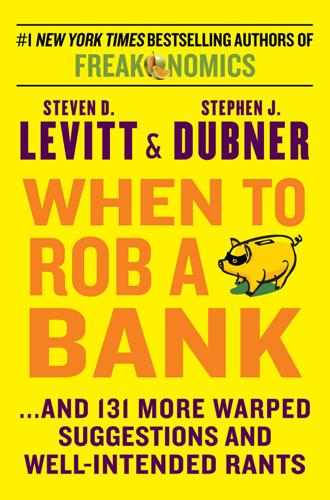
When to Rob a Bank: ...And 131 More Warped Suggestions and Well-Intended Rants
by
Steven D. Levitt
and
Stephen J. Dubner
Published 4 May 2015
Scott, 171–72 McCain, John, 35–36 McDonald’s, workers in, 273 McKibben, Bill, 179–84 McLaughlin, Dan, 202–4 McWilliams, James, 175–78, 179–84 meat, eating, 179–84 media: and charitable giving, 324–28 fears caused by, 113 medical care, limitations of, 297 medical system, interactions with, 289 medicine, and statistics, 280–82 memoirs, fake, 146–48 mental accounts, 68–69 Merton, Robert C., 336 Mickelson, Phil, 73–74 Miles, Tom, 130 military draft, 23–25 Minty, Jessica H., 326 Moonen, Scott, 47 morality vs. economics, 288 Morgan, Yourhighness, 40 morphine, value of, 297 Moscowitz, Toby, 209–12 motorcycle accidents, 102–3 Mullainathan, Sendhil, 347 Mumbai train system, 140–41 Murphy, Kevin, 59 Myanmar, cyclone in, 324–28 Myers, Mike, 306 Nadal, Rafael, 74 names, 37 aptonyms, 43–47 first, 40, 41 heavenly, 41 middle, 38–40 unpredictability of, 42–43 National Health Service (U.K.), 26–29 National Highway Traffic Safety Administration (NHTSA), 249–50 National Violent Death Reporting System, 250 natural field experiment, 322 Neckermann, Susanne, 338 negative externality, 87 Newark-Liberty airport, 21–22 New York state senate, 233–36 New York Times, The, 3, 8, 11, 41, 96, 109–16, 167, 276 Nielsen ratings, TV viewing, 322–24 “No Gas Day,” 311–14 Noll, Chuck, 218 Noll, Thomas, 228–29 Nostradamus, 109 Obama, Barack, 33, 214, 278–80 obesity, 116–19 oil, “peak,” 109–16 Oliver, Eric, 118 online dating, 268–69 OPEC, 111–12 Oportunidades, 138–39 opportunity cost, 349–50 orange juice, 174–75 Osgood, Daniel, 165 packaging, 175–78 Pacquiao, Manny, 72–3 Pakistan earthquake, 325–27 panhandlers, 328–37 Pape, Robert, 10 paper vs. plastic bags, 167 Pardo, Bruce, 130–32 Pareto efficiency, 30 Pariah (TV show), 253–55 Parker, Susan W., 138–40 Pataki, George, 119 Paulos, John Allen, 286 Paulson, Henry, 236 Peltzman, Sam, 166 penny, 61–65 penny floor, 65 Pepsico, 59–60 perfect substitutes, 60 petroleum extraction, 109–16 Pettitte, Andy, 149–50 Pham, David “the Dragon,” 193 pilots, 83–86 pirates, 314–19 Pittsburgh Steelers, 212–19 Plack, Les, 47 Planned Parenthood, 65–67 Pledge-a-Picket, 66 poker: cheating, 154–58 how not to cheat, 153–55 Internet, 127–30, 157 one card away from final table, 192–95 record that can never be broken, 192 shootout tournament, 193 World Series of Poker, 187–88, 192–95 Polamalu, Troy, 216 Poland Spring bottled water, 3–4 Pollan, Michael, 169 postage, exemption from, 141–43 practice, ten thousand hours, 199, 201–2 praise, 351 Pre-Implantation Genetic Diagnosis (PGD), 280–82 prices: anchoring, 309 of autographed baseballs, 80–81 bounty on bin Laden, 57–59 of cars, 54–57 of chicken wings, 75–77 and corporate sponsorships, 81 discrimination in, 173 of food, 116 of gas, 86–90 for hate mail, 49–51 housing, 67–69 of kiwifruits, 77–80 peak oil, 109–16 of a penny, 61–65 of prescription drugs, 52–54 rising, 110, 111 of shrimp, 344 of songs, 69–71 and substitutes, 113 supply and demand, 78–80, 110, 112, 115, 128, 341–44 of voices in animated films, 306 priming, 228–29 principal-agent problem, 209 Prius Effect, 185 procrastination, 121 profits, going green for, 172–74 pro-life movement, 65 prostitution: Berlin brothel, 173 escort service, 261–67 legalization of, 255–56, 265–67 race: in the marketplace, 315–22 TV viewing habits, 322–24 rain forest, saving, 174–75 randomization, 322 rational addictions, 92–94 Reeve, Christopher, 102 Reilly, Barry, 225–26 Rickman, Neil, 225–26 RICO (federal racketeering statutes), 232 Rios, Brandon, 72 risk-aversion, 125–27 risk-taking, 121 Rochambeau (Rock, Paper, Scissors), 188–89 Rodriguez, Alex, 149 Roethlisberger, Ben, 103 Roe v.

The Intelligence Trap: Revolutionise Your Thinking and Make Wiser Decisions
by
David Robson
Published 7 Mar 2019
The lower the quantity on the wheel, the smaller their estimate – the arbitrary value had planted a figure in their mind, ‘anchoring’ their judgement.6 You have probably fallen for anchoring yourself many times while shopping in the sales. Suppose you are looking for a new TV. You had expected to pay around £100, but then you find a real bargain: a £200 item reduced to £150. Seeing the original price anchors your perception of what is an acceptable price to pay, meaning that you will go above your initial budget. If, on the other hand, you had not seen the original price, you would have probably considered it too expensive, and moved on. You may also have been prey to the availability heuristic, which causes us to over-estimate certain risks based on how easily the dangers come to mind, thanks to their vividness.
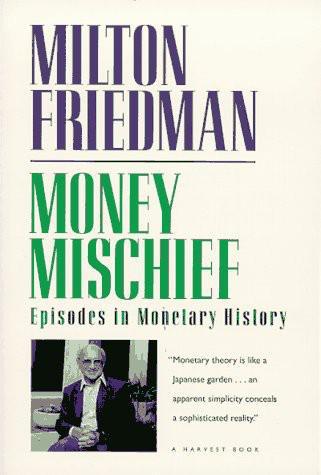
Money Mischief: Episodes in Monetary History
by
Milton Friedman
Published 1 Jan 1992

You Are Not So Smart
by
David McRaney
Published 20 Sep 2011
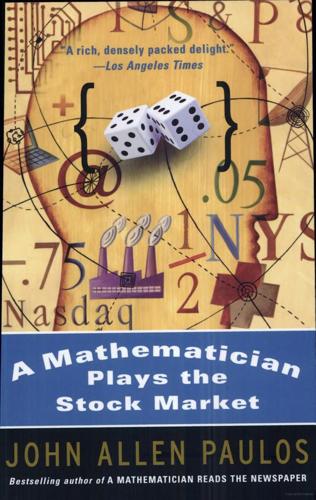
A Mathematician Plays the Stock Market
by
John Allen Paulos
Published 1 Jan 2003
technical analysis trading strategies unemployment whim World Class Options Market Maker (WCOMM) present value compound interest and discounting process for stock purchases based on price movements complexity changes over time extreme movements herd-like and volatile nature of insider trading and network effect on normal curve and power law and subterranean information processing and price, P/E ratio price targets anchoring effect and hype and unrealistic prices, of stocks manipulating for own benefit (management/CEO) oscillation created by investor reactions to each other reflecting publicly available information prisoner’s dilemma private information becoming common knowledge dynamic with common knowledge market predictions and probability coin flipping game and dice and gambling games games of chance outguessing the average guess St.
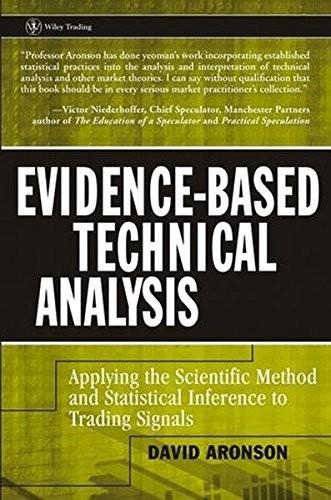
Evidence-Based Technical Analysis: Applying the Scientific Method and Statistical Inference to Trading Signals
by
David Aronson
Published 1 Nov 2006
Additionally, it bolsters the notion that a very simplistic form of TA is useful. • Nonreversing momentum: When a stock’s momentum is measured by its proximity to its 52-week high, rather than its prior rate of return, profits are greater and momentum does not reverse.55 The author of this study speculates that investors become mentally anchored to prior 52-week price highs. Anchoring is known to prevent people from making appropriate adjustments to new information. The author of this study, Michael Cooper, conjectured that this prevents stocks near their 52-week highs from responding to new fundamental developments as rapidly as they should. Retarded news response engenders systemic price trends (momentum) that correct the mispricing. • Momentum confirmed by trading volume: Further support for the validity of TA comes from studies showing that, when trading volume is used conjointly with price momentum, even higher returns can be earned.
…
Underreactions to bullish news cause asset prices to remain too cheap, whereas underreactions to bearish news leave prices too dear. Over time, the market’s temporary state of inefficiency is resolved as prices drift (trend) to the rational level. Thus, anchoring can help explain the occurrence of price trends. Anchoring may explain the profitability of a momentum strategy alluded to earlier.67 It is based on a simple technical indicator, a stock’s proximity to its 52-week high. Because this information is available in newspapers and on various web sites, investors may fixate (anchor) on it. In other words, investors may fixate or anchor on the 52-week high price if a stock is currently trading near that level.
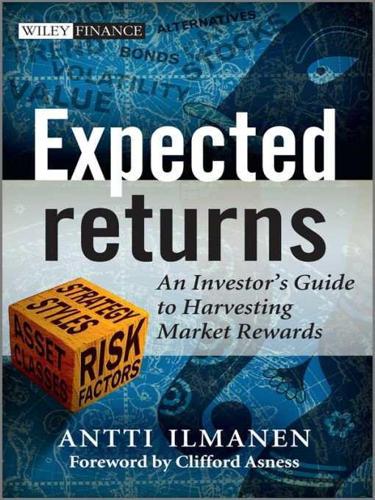
Expected Returns: An Investor's Guide to Harvesting Market Rewards
by
Antti Ilmanen
Published 4 Apr 2011
If expected returns vary over time, how can we know the current level of expected returns? In most cases we cannot. Sadly, the market’s expected returns are unobservable. The best we can do is estimate them, by hook or crook. The simplest and more popular approaches involve relating current market prices to some value anchors. If current market prices are low compared with such anchors (which can be as simple as historical average price, yield or spread, or something more complex), expected returns are deemed to be above average. Such value indicators do not reveal whether high current expected returns reflect irrational underpricing or rationally high risk premia.
…
Three building blocks of expected returns for diverse investments Value and carry indicators are reviewed above for stocks and bonds. Value and carry indicators for real estate, commodities, and currencies are discussed in Sections 11.2, 11.3, and 13.3. Value is typically based on deviation of current market price from some valuation anchor (such as purchasing power parity for currencies or rental income for real estate). In the absence of better value anchors, investors may use average real market price over the past few years to capture any mean reversion tendency. Natural value indicators exist for some systematic strategies (e.g., the dispersion of valuation ratios between value and growth stocks, or the implied-vs.
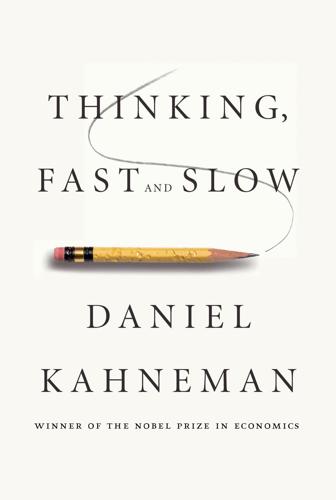
Thinking, Fast and Slow
by
Daniel Kahneman
Published 24 Oct 2011
Value $59. It is easy to assess the expected monetary value of these gambles, but adding a specific monetary value did not alter the results: evaluations remained insensitive to probability even in that condition. People who thought of the gift as a chance to get roses did not use price information as an anchor in evaluating the gamble. As scientists sometimes say, this is a surprising finding that is trying to tell us something. What story is it trying to tell us? The story, I believe, is that a rich and vivid representation of the outcome, whether or not it is emotional, reduces the role of probability in the evaluation of an uncertain prospect.
…
Jacowitz and Daniel Kahneman, “Measures of Anchoring in Estimation Tasks,” Person {pantion ality and Social Psychology Bulletin 21 (1995): 1161–66. substantially lower: Gregory B. Northcraft and Margaret A. Neale, “Experts, Amateurs, and Real Estate: An Anchoring-and-Adjustment Perspective on Property Pricing Decisions,” Organizational Behavior and Human Decision Processes 39 (1987): 84–97. The high anchor was 12% above the listed price, the low anchor was 12% below that price. rolled a pair of dice: Birte Englich, Thomas Mussweiler, and Fritz Strack, “Playing Dice with Criminal Sentences: The Influence of Irrelevant Anchors on Experts’ Judicial Decision Making,” Personality and Social Psychology Bulletin 32 (2006): 188–200. NO LIMIT PER PERSON: Brian Wansink, Robert J.
…
positive test strategy possibility effect: gambles and; threats and post-traumatic stress poverty precautionary principle predictability, insensitivity to predictions and forecasts; baseline; clinical vs. statistical; disciplining; of experts, see expert intuition; extreme, value of; formulas for, see formulas; increasing accuracy in; low-validity environments and; nonregressive; objections to moderating; optimistic bias in; outside view in; overconfidence in; planning fallacy and; short-term trends and; valid, illusion of; see also probability preference reversals; unjust premonition, use of word premortem pretentiousness language pricing policies priming; anchoring as t="-5%"> Princeton University probability; base rates in, see base rates; decision weights and, see decision weights; definitions of; and disciplining intuition; less-is-more pattern and; Linda problem and; overestimation of; plausibility and; and predicting by representativeness; prior, insensitivity to; professional stereotypes and; of rare events, see rare events; representativeness and, see representativeness; similarity and; subjective; as sum-like variable; see also predictions and forecasts probability neglect Proceedings of the National Academy of Sciences professional stereotypes professorial candidates prospect theory; in Albert and Ben problem; blind spots of; cumulative; decision weights and probabilities in; fourfold pattern in; frames and; graph of losses and gains in; loss aversion in; reference points in “Prospect Theory: An Analysis of Decision Under Risk” (Kahneman and Tversky) prototypes psychiatric patients psychological immune system psychology, teaching psychopathic charm psychophysics psychotherapists pundits; see also expert intuition punishments: altruistic; rewards and; self-administered pupil dilation questionnaire and gift experiments questions; substitution of, see substitution Rabin, Matthew radiologists rafters, skilled rail projects randomness and chance; misconceptions of Random Walk Down Wall Street, A (Malkiel) rare events; overestimation of; regret and rational-agent model rationality Rationality and the Reflective Mind (Stanovich) ">rats Reagan, Ronald reciprocal priming recognition recognition-primed decision (RPD) model Redelmeier, Don reference class forecasting regression to the mean; causal interpretations and; correlation and; difficulty in grasping; two-systems view of “Regression towards Mediocrity in Hereditary Stature” (Galton) regret religion remembering self Remote Association Test (RAT) reorganizations in companies repetition representativeness; base rates and; see also base rates; in Linda problem; predicting by; professional stereotypes and; sins of; in Tom W problem research: artifacts in; hypothesis testing in; optimism in resemblance; in predictions resilience responsibility retrievability of instances reversals; unjust rewards; self-administered Rice, Condoleezza risk assessment; aggregation and; broad framing in; decision weights in, see decision weights; denominator neglect and; by experts; and format of risk expression; fourfold pattern in; for health risks; hindsight bias and; laws and regulations governing; loss aversion in; narrow framing in; optimistic bias and; policies for; possibility effect and; precautionary principle and; probability neglect and; public policies and; small risks and; of technologies; terrorism and; see also gambles risk aversion risk seeking “Robust Beauty of Improper Linear Models in Decision Making, The” (Dawes) Rosett, Richard Rosenzweig, Philip Royal Dutch Shell Royal Institution Rozin, Paul < Philip Rumsfeld, Donald Russell Sage Foundation Russia Saddam Hussein sadness safety; health risks and; health violation penalties and; precautionary principle and samples, sampling: accidents of; and bias of confidence over doubt; law of large numbers; law of small numbers; size of; small, exaggerated faith in Samuelson, Paul San Francisco Exploratorium Savage, Jimmie Save More Tomorrow Schelling, Thomas Schkade, David school size Schwarz, Norbert Schweitzer, Maurice Science Scientific American scientific controversies scientific research: artifacts in; hypothesis testing in; optimism in Scottish Parliament self-control self-criticism Seligman, Martin selves; experiencing; remembering sets Shafir, Eldar similarity judgments Simmel, Mary-Ann Simon, Herbert Simons, Daniel Simpson, O.
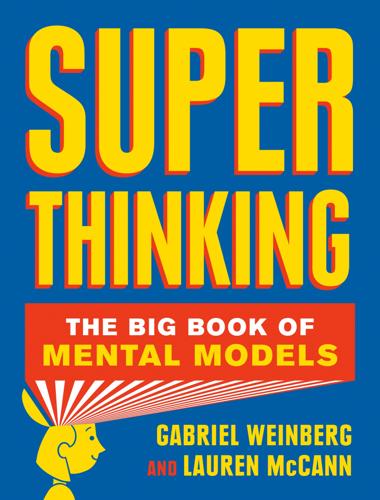
Super Thinking: The Big Book of Mental Models
by
Gabriel Weinberg
and
Lauren McCann
Published 17 Jun 2019
However, are those reduced prices a real bargain? Usually not. They’re reduced from the so-called manufacturer’s suggested retail price (MSRP), which is usually very high. Being aware of the MSRP anchors you so that you feel you are getting a good deal at 40 percent off. Often, that reduction just brings the price to a reasonable level. Anchoring isn’t just for numbers. Donald Trump uses this mental model, anchoring others to his extreme positions, so that what seem like compromises are actually agreements in his favor. He wrote about this in his 1987 book Trump: The Art of the Deal: My style of deal-making is quite simple and straightforward.
…
All the mental models in this section—from the third story to learned helplessness—can help you increase your empathy. When applying them, you are effectively trying to understand people’s actual circumstances and motivations better, trying as best you can to walk a mile in their shoes. PROGRESS, ONE FUNERAL AT A TIME Just as you can be anchored to a price, you can also be anchored to an entire way of thinking about something. In other words, it can be very difficult to convince you of a new idea when a contradictory idea is already entrenched in your thinking. Like many kids in the U.S., our sons are learning “Singapore math,” an approach to arithmetic that includes introducing pictorial steps in order to develop a deeper understanding of basic concepts.
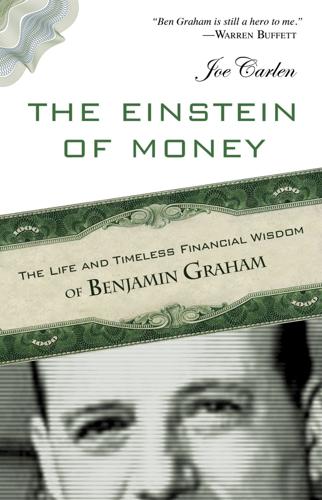
The Einstein of Money: The Life and Timeless Financial Wisdom of Benjamin Graham
by
Joe Carlen
Published 14 Apr 2012
In his very first published work on investing, the September 1917 Magazine of Wall Street article titled “Curiosities of the Bond List,” Graham wrote that “as accurate as markets are, they cannot claim infallibility.”9 Writing at the end of World War I, Graham's observation about the market's general (but occasionally imperfect) accuracy was correct. Then, during the war boom and the ensuing “Roaring Twenties,” this dynamic was altered dramatically and permanently. Whereas, prior to the war, the collective behavior of these investing businesspeople usually kept security (particularly common stock) prices well-anchored to a value reflective of the issuing companies’ business fundamentals, the collective behavior of the postwar “speculative public”10 left many security prices dangerously untethered to their underlying (or intrinsic) values, as they remain to this day. So, like a balloon released into the air, security prices have since veered up, down, and sideways for a multitude of reasons, the vast majority of which are not material to the issuing company's long-term business fundamentals.

Exponential: How Accelerating Technology Is Leaving Us Behind and What to Do About It
by
Azeem Azhar
Published 6 Sep 2021
The Nobel Prize-winning economists Daniel Kahneman and Amos Tversky have explored how people make decisions amid uncertainty. They found that, when presented with a numerical challenge, people tend to fix upon some readily available number and adjust their responses around it. It’s a trick salespeople use: by starting at a particular price, they anchor our expectations about what the real value of something might be. But it fails when it encounters exponential growth. As the growth curve takes off, people’s expectations remain anchored around small figures from early in the process. Why do humans consistently underestimate the power of exponential change?
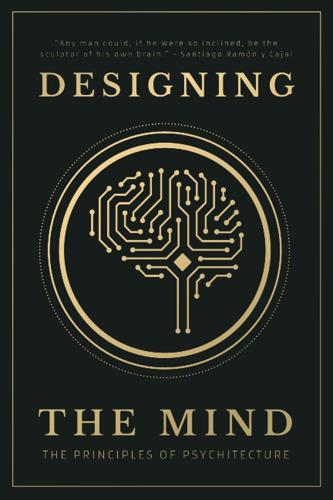
Designing the Mind: The Principles of Psychitecture
by
Designing The Mind
and
Ryan A Bush
Published 10 Jan 2021
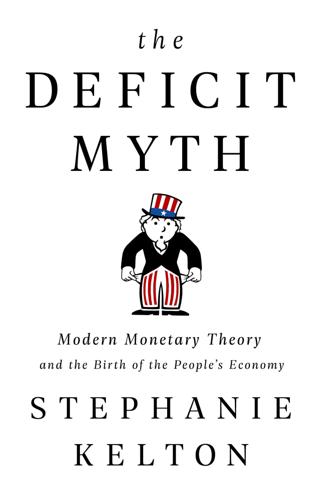
The Deficit Myth: Modern Monetary Theory and the Birth of the People's Economy
by
Stephanie Kelton
Published 8 Jun 2020
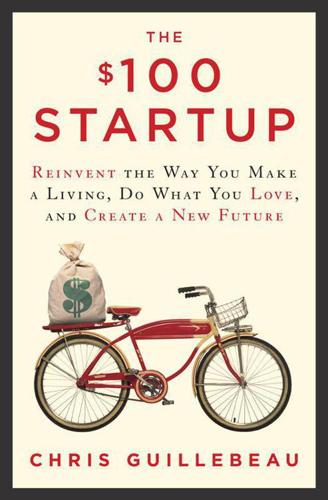
The $100 Startup: Reinvent the Way You Make a Living, Do What You Love, and Create a New Future
by
Chris Guillebeau
Published 7 May 2012
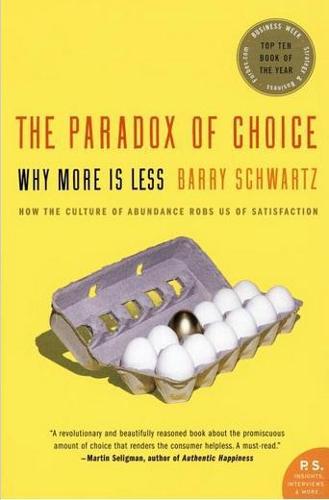
The Paradox of Choice: Why More Is Less
by
Barry Schwartz
Published 1 Jan 2004
They didn’t sell too many of these expensive bread makers, but sales of the less expensive one almost doubled! With the expensive bread maker serving as an anchor, the $279 machine had become a bargain. Anchoring is why department stores seem to have some of their merchandise on sale most of the time, to give the impression that customers are getting a bargain. The original ticket price becomes an anchor against which the sale price is compared. A more finely tuned example of the importance of the context of comparison comes from a study of supermarket shoppers done in the 1970s, shortly after unit-pricing started appearing on the shelves just beneath the various items. When unit price information appeared on shelf tags, shoppers saved an average of 1 percent on their grocery bills.

Minimalism: Live a Meaningful Life
by
Joshua Fields Millburn
and
Ryan Nicodemus
Published 8 Dec 2011
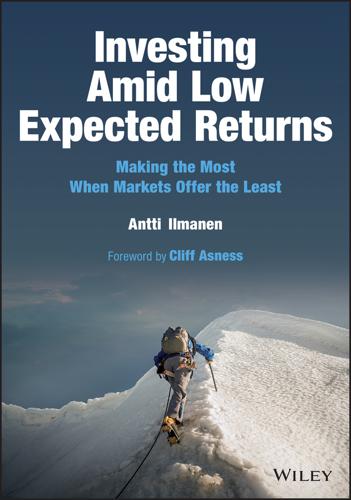
Investing Amid Low Expected Returns: Making the Most When Markets Offer the Least
by
Antti Ilmanen
Published 24 Feb 2022
Chapter 10 will include a brief description of different predictive techniques, also highlighting the differences between cross-sectional and timing applications. Flagship Strategy: Value-based Stock Selection I will focus on value-based stock selection using systematic rules but will also briefly discuss other contrarian strategies. Value investing compares the current market price with some fundamental anchor to deem whether an asset is cheap or rich. In a typical academic implementation of the value style, we sort a set of stocks by some measure of fundamental value to price, and we go long or overweight the cheap (“value”) stocks, while shorting or underweighting expensive (“growth”) stocks.4 A long/short portfolio may contain hundreds of stocks on each side to capture the value style exposure but hopefully little else, as the market exposures of longs and shorts broadly cancel out and the idiosyncratic security risk gets diversified away.
…
In a typical academic implementation of the value style, we sort a set of stocks by some measure of fundamental value to price, and we go long or overweight the cheap (“value”) stocks, while shorting or underweighting expensive (“growth”) stocks.4 A long/short portfolio may contain hundreds of stocks on each side to capture the value style exposure but hopefully little else, as the market exposures of longs and shorts broadly cancel out and the idiosyncratic security risk gets diversified away. Academic research mainly uses a deliberately simple ratio of market price to a fundamental anchor, such as a firm's book value, and then favors stocks with a high book/price ratio (B/P).5 Investors can also use other fundamental anchors besides book value, including earnings, cash flows, and sales.6 Composite value measures may be more robust to evolving markets and accounting practices.

Planet Ponzi
by
Mitch Feierstein
Published 2 Feb 2012
If you review the graphs presented in chapter 13, ‘A brief flash of reality,’ you’ll see why I like it so much. In times of grotesque debt accumulation and asset destruction, gold is the one investment buddy you can really trust. I have plenty of gold in my current portfolio and I can’t see that changing while conditions remain as uncertain as they are. Having said that, the price of gold isn’t anchored by interest rates or dividend payments, or any of the other things which normally anchor the price of a security or physical commodity. That makes the gold price more than normally susceptible to swings of sentiment. So if you like gold, then buy carefully. Buy on the dips. Don’t get suckered into buying when the gold is on one of its periodic upsurges.
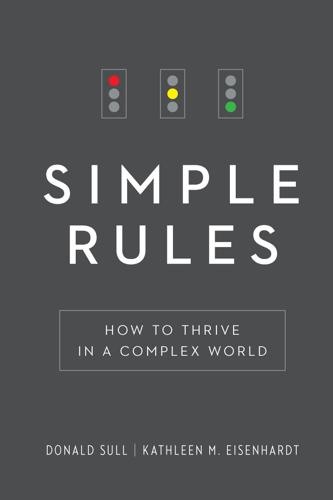
Simple Rules: How to Thrive in a Complex World
by
Donald Sull
and
Kathleen M. Eisenhardt
Published 20 Apr 2015
The field of strategy is based on a precise point of view of what a company’s ultimate objective should be—to create economic value over time and capture it as profits. Economic value is defined as the difference between what a customer is willing to pay for a product and the cost of all the inputs required to produce it. Willingness to pay works better than alternative measures, such as revenues or price, because it anchors the analysis in the customer’s point of view and forces managers to consider what customers value and what alternatives they have. If a company succeeds in generating economic value (and protecting it from competitors), it will generate profits and cash flow into the future—the ultimate goal of a company’s strategy.
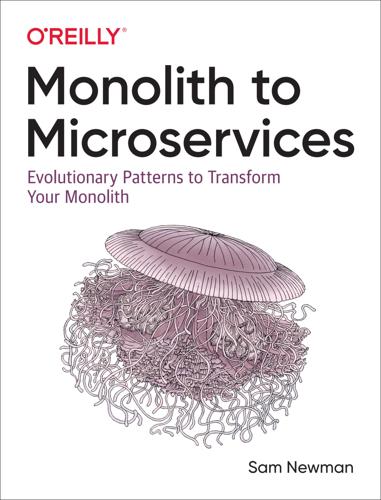
Monolith to Microservices: Evolutionary Patterns to Transform Your Monolith
by
Sam Newman
Published 14 Nov 2019
core competency, teams structured around, Shifting Structures correlation IDs (CIDs), Choreographed sagas, Tracing costsavoiding the sunk cost fallacy, Avoiding the Sunk Cost Fallacy cost-effective scaling for load, Scale Cost-Effectively for Load of change, Cost of Change-Easier Places to Experimenteasier places to experiment, Easier Places to Experiment reversible and irreversible decisions, Reversible and Irreversible Decisions couplingabout, Coupling and cohesion, balancing, On Coupling and Cohesion deployment, Deployment coupling domain, Domain coupling implementation, Implementation coupling temporal, Temporal coupling credentials, separate, for database access, The Database as a Public Contract credit derivative pricing, comparing using parallel run, Example: Comparing Credit Derivative Pricing culture (organizational)anchoring new approaches in the culture, Anchoring New Approaches in the Culture and adaptability to change or process improvements, Being Open to New Approaches customer-installed software, Customer-Installed and Managed Software D dark launching, parallel run pattern and, Dark Launching and Canary Releasing data consistency, As a Fallback Mechanismeventual consistency, Data Synchronization, Synchronizing the data in ACID transactions, ACID Transactions in move foreign key relationship to code pattern, Data Consistencycheck before deletion, Check before deletion deciding how to handle deletion, So how should we handle deletion?
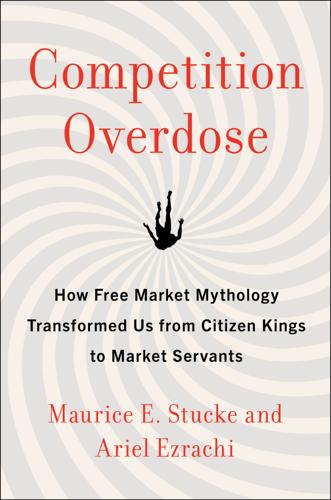
Competition Overdose: How Free Market Mythology Transformed Us From Citizen Kings to Market Servants
by
Maurice E. Stucke
and
Ariel Ezrachi
Published 14 May 2020
But judges may unintentionally play dice with criminal sentences.” And these “anchoring effects” may result in rolls of the dice in many other areas of judgment, too, including prices set by hotel reservation sites and real estate agents.31 We may reject the idea that an arbitrary number could have an impact on our own decisions. But drip pricing is a way of anchoring us to a low headline price (say $26 for the Circus Circus hotel room). Once we’ve got that price of $26 in our head, we fail to adjust our “perception of the ‘value of the offer’ sufficiently as more costs are revealed.”32 Drip pricing also taps into a second weakness. Although as we shop for a hotel room we haven’t actually purchased that reservation for $26, some part of us feels like we have and we now feel attached to it.
…
See also CoreCivic Costco and other club stores, 102–3 cream skimming, 169–70, 175, 183–87 credit card industry, 68, 69, 70–71, 75–77 credit default swaps, 128 criminal sentencing, 80–81, 176–77 crony capitalism, 160, 163, 230, 285 Cruz, Ted, 266 cultural conditioning college as route to social mobility, 29–30 competition delivers quality at a low price, 47–48, 49 competition is always good, x, 284 embarrassment for gullibility, 70 and escalation paradigm, 35–36 lifelong superior achievement goal, 32–33 to love competition, 125 to not compete, 122 self-interest, 71, 235–36 and status competition, 28 See also human nature culture, x–xi Dalai Lama, 253 Dale, Stacy, 36–37 D’Angelo, Jonathan, 112–13 Dartmouth College, 25 Darwin, Charles, 39 data for Amazon’s personal recommendations, 105–6, 107 analytical power of, 218–19 children’s data gleaned for advertisers, 193–95 college scorecard data, 300–304, 318n86 on consumers’ behavior, 87–91, 204–5, 207–9 Gamemakers attract bidders/advertisers, 207–9 Gamemakers’ harvesting techniques, 194, 203–7 in Las Vegas, 87–91 dating services, online overview, 108–9 competition levels, 109–12, 111 InterActiveCorp, 109–11, 111, 115–16 and marriage, 114–15 profiting from choice overload, 113–14, 115–16 slow dating, 117 deadbeat customers, 70–71 Dear Genevieve effect, 12–15, 16, 19–20, 38–39 death bonds, 245 decision aids for choice overload, 101–2 de-escalating the arms race colleges and universities, 25–27, 40, 133–34 collegiate sports, 134–38, 140–41 students and parents, 27–34, 40 Deloitte, 277 deregulation of banks, 126–30 derivatives market, 261–63 diaper apps, 197 digital ad market, 210 diminishing returns, 96–97 dissent, noncompliance, and change, 284–87 divergence of individual and collective interests, 12–20, 39–40, 242–43, 263 DOJ (US Department of Justice), 128, 172–73, 174, 232 do not track features on mobile phones, 212–13 Dostoyevsky, Fyodor, 71 drip pricing overview, 147 and anchor value, 80–81 and brain fatigue, 81–82 Caesars opposition to, 84–87 casino lobbyists combat FTC’s plan, 150–52 vs. consumer’s ability to compare prices, 155–57 consumers’ loss aversion, 81 countries with laws against, 148 FTC attempt to legalize, 148–50 in hotels, 78–80, 82–84, 147, 148–54 lobbyists use competition ideology, 150–52 and sunk cost fallacy, 81 Duhigg, Charles, 227 Duke University, 16–17, 24 dynamic ads, 204–5 Easterbrook, Frank H., 234–35 Economist, 197 Eliot, T.
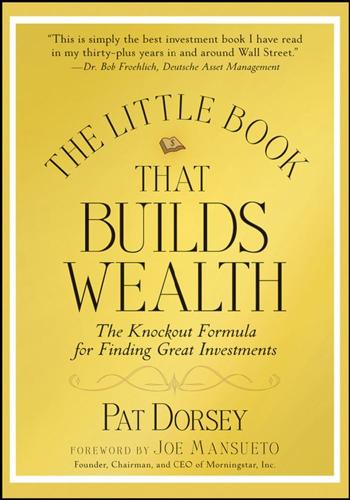
The Little Book That Builds Wealth: The Knockout Formula for Finding Great Investments
by
Pat Dorsey
Published 1 Mar 2008
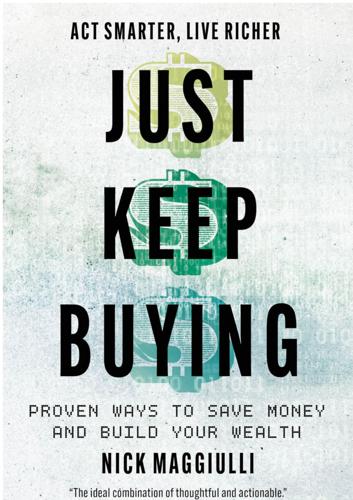
Just Keep Buying: Proven Ways to Save Money and Build Your Wealth
by
Nick Maggiulli
Published 15 May 2022
What it does mean is that their valuations are based solely on perception—what someone else is willing to pay for them. Without underlying cash flows, perception is everything. It’s different for income-producing assets, though. While perception does play a role in how these assets are priced, cash flows should anchor their valuations, at least in theory. For this reason, the bulk of my investments (90%) are in income-producing assets, with the remaining 10% spread out among non-income-producing assets such as art and various cryptocurrencies. Final Summary Here is a summary table of the information covered in this chapter, for better comparison purposes.
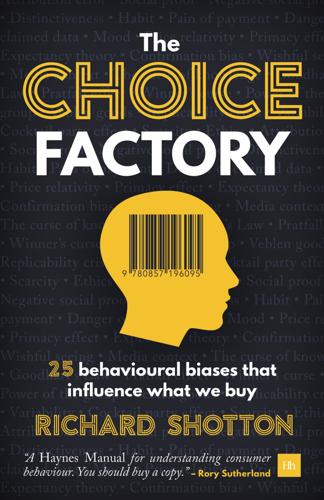
The Choice Factory: 25 Behavioural Biases That Influence What We Buy
by
Richard Shotton
Published 12 Feb 2018
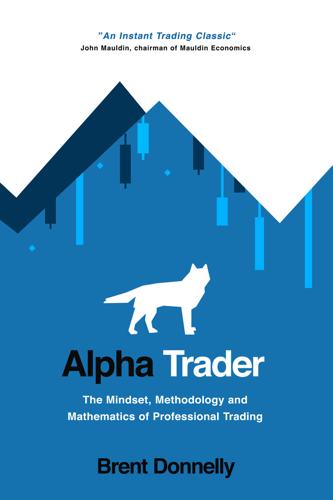
Alpha Trader
by
Brent Donnelly
Published 11 May 2021
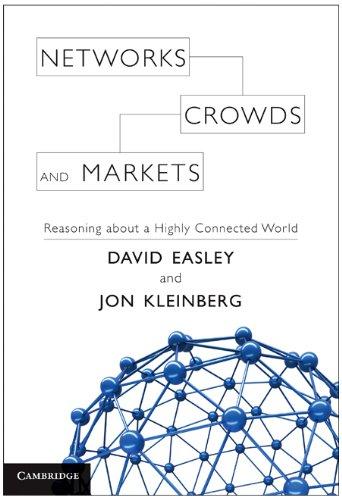
Networks, Crowds, and Markets: Reasoning About a Highly Connected World
by
David Easley
and
Jon Kleinberg
Published 15 Nov 2010
In this case, we could push the prices of these free-floating items down slightly, while still preserving the market-clearing property. This would yield a set of market-clearing prices of smaller total sum, contradicting our assumption that we already have the minimum market-clearing prices. This contradiction will show that the minimum market-clearing prices are all anchored via alternating paths to zero-priced items. 476 CHAPTER 15. SPONSORED SEARCH MARKETS Sellers Buyers Valuations a w 7, 5, 4, 2 b x 0, 0, 0, 0 c y 5, 6, 2, 2 d z 4, 4, 2, 1 Figure 15.12: If we start with the example in Figure 15.11 and zero out buyer x, the structure of the optimal matching changes significantly.
…
And this in turn establishes that the reduced prices are still market-clearing after the price-reduction, contradicting our assumption that they were the minimum market-clearing prices. This concludes the proof, and if we look back at how it worked, we can see that it bears out our intuition for how the non-matching edges serve to anchor all the items via alternating paths to the items of price 0. Specifically, if this anchoring did not happen, then there would be a set X that was floating free of any connections to zero-priced items, and in this case the prices of all items in X could be pushed further downward. This can’t happen if the market-clearing prices are already as low as possible. A Proof of Fact 2.

Inside the House of Money: Top Hedge Fund Traders on Profiting in a Global Market
by
Steven Drobny
Published 31 Mar 2006
In the old days, when oil prices went up, there was always a risk that you needed to tighten policy to ensure that inflation didn’t get out of hand. Now we’ve had two significant oil shocks since the Bank of England has been independent, and in neither case did they have to tighten policy, because wages and prices were well anchored by subdued inflation expectations.That’s a good outcome. There are other benefits from the reduction of inflation volatility, such as businesses being more willing to invest, and you don’t get unfair redistribution because of unexpected inflation. Likewise, the Treasury is no longer worrying that much about macromanagement and macrostability, so it can concentrate on other policies designed to help the long-term growth rate of the UK economy.

Stocks for the Long Run, 4th Edition: The Definitive Guide to Financial Market Returns & Long Term Investment Strategies
by
Jeremy J. Siegel
Published 18 Dec 2007
This demonstrates another one of Kahneman and Tversky’s behavioral findings: anchoring, or the tendency of people facing complex decisions to use an “anchor” or a suggested number to form their judgment.22 Figuring out the “correct” stock price is such a complex task that it is natural to use the recently remembered stock price as an anchor and then judge the current price a bargain. Dave: If I follow your advice and sell my losers whenever prospects are dim, I’m going to register a lot more losses on my trades. IC: Good! Most investors do exactly the opposite and realize poor returns. Research has shown that investors sell stocks for a gain 50 percent more frequently than they sell stocks for a loss.23 This means that stocks that are above their purchase price are 50 percent more likely to be sold than stocks that show a loss.
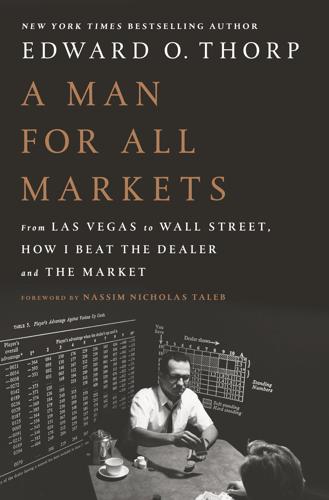
A Man for All Markets
by
Edward O. Thorp
Published 15 Nov 2016
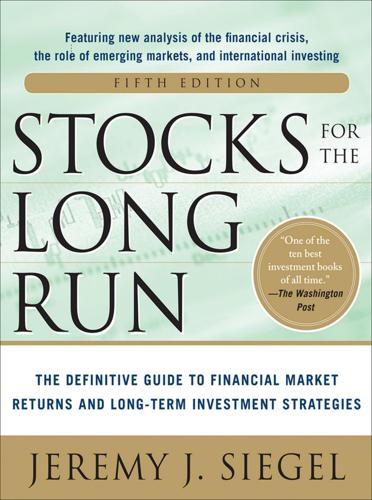
Stocks for the Long Run 5/E: the Definitive Guide to Financial Market Returns & Long-Term Investment Strategies
by
Jeremy Siegel
Published 7 Jan 2014
This demonstrates another one of Kahneman and Tversky’s behavioral findings: anchoring, or the tendency of people facing complex decisions to use an “anchor” or a suggested number to form their judgment.24 Figuring out the “correct” stock price is such a complex task that it is natural to use the recently remembered stock price as an anchor and then judge the current price a bargain. Dave: If I follow your advice and sell my losers whenever prospects are dim, I’m going to register a lot more losses on my trades. IC: Good! Most investors do exactly the opposite, to their detriment. Research has shown that investors sell stocks for a gain 50 percent more frequently than they sell stocks for a loss.25 This means that stocks that are above their purchase price are 50 percent more likely to be sold than stocks that show a loss.
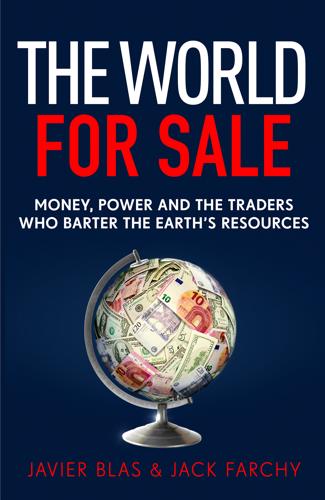
The World for Sale: Money, Power and the Traders Who Barter the Earth’s Resources
by
Javier Blas
and
Jack Farchy
Published 25 Feb 2021
Despite an output hike by Saudi Arabia to compensate for the Iranian shortfall, official OPEC oil prices surged throughout 1979 and 1980, first to $18 a barrel, and then to $28. In reality, the market price went much higher. Oil changed hands in the spot market for $40 a barrel or more – there were rumours of deals at $50 a barrel. It was a price that would have sounded outlandish only a few years earlier, when prices had been anchored at $2 for a decade at a time. The price of oil had been decisively freed from the grip of the Seven Sisters, and the lords of this new, volatile market were traders like Rich and Deuss. The world was thirsty for oil. Companies were desperate after being cut off from Iranian supplies overnight.
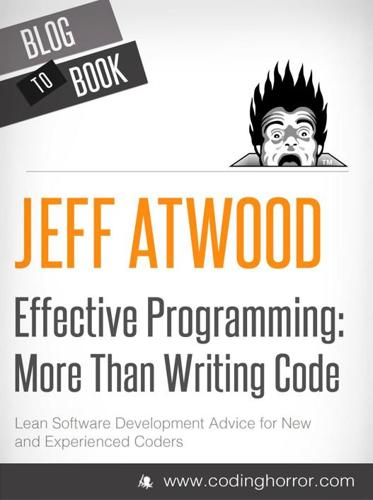
Effective Programming: More Than Writing Code
by
Jeff Atwood
Published 3 Jul 2012
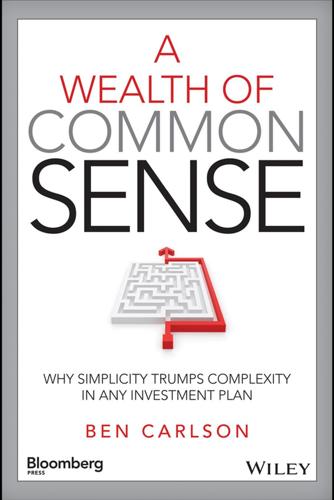
A Wealth of Common Sense: Why Simplicity Trumps Complexity in Any Investment Plan
by
Ben Carlson
Published 14 May 2015
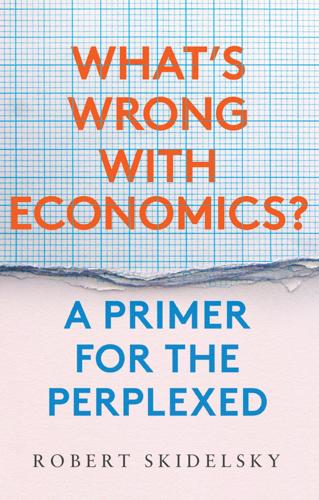
What's Wrong With Economics: A Primer for the Perplexed
by
Robert Skidelsky
Published 3 Mar 2020
So it’s a classic unjust bargain, with the worker having to accept whatever wage the capitalist offers him, on pain of starvation.6 The problem facing all cost of production theories was that the prices which goods fetched in rapidly expanding and increasingly deregulated markets had little relation to the hours of labour spent in producing them. The long-run, or normal or ‘natural’ price obstinately failed to emerge from the ever-spreading web of exchange relations. The price system lacked a moral anchor. A theory of value which couldn’t explain actual price behaviour was rather obviously deficient, and from the 1870s the cost of production theory was swept away by a supply and demand theory, in which market prices were jointly determined by scarcity and consumer demand. Adam Smith had explained the high price of diamonds by the expense of getting them from the mines to the market.
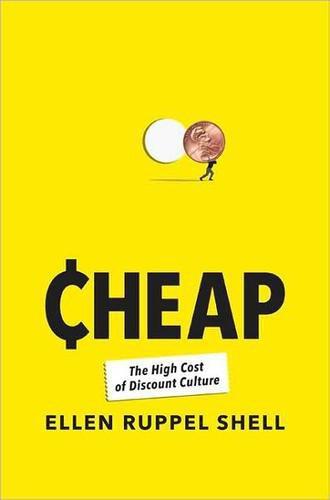
Cheap: The High Cost of Discount Culture
by
Ellen Ruppel Shell
Published 2 Jul 2009
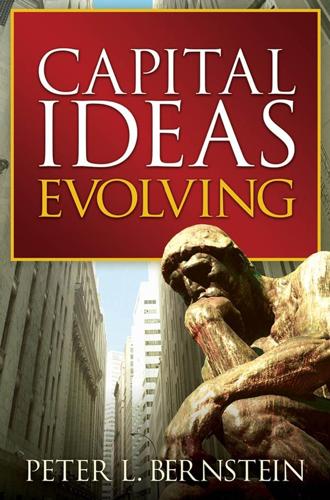
Capital Ideas Evolving
by
Peter L. Bernstein
Published 3 May 2007

Birth of the Euro
by
Otmar Issing
Published 20 Oct 2008
On account of the loss of credibility, the interest rate level across periods is higher than with a constant monetary policy aimed solely at maintaining price stability. In the end, therefore, an inflationary monetary policy does not add up, and on balance society is worse off. Thus the long-run maintenance of price stability and correspondingly well-anchored inflation expectations are not only the best, but also the only way in which monetary policy can contribute to growth and employment over time. If the central bank deviates from this course, not only will it fail to make a positive contribution to achieving the ‘other objectives’, but – quite the reverse – it will also fail to fulfil its actual mandate.19 The above reflects current knowledge at the time the consultations and negotiations on the Statute of a European Central Bank got under way.
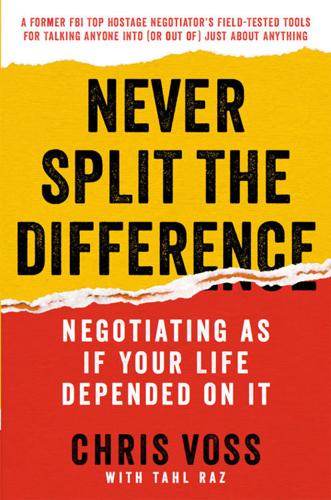
Never Split the Difference: Negotiating as if Your Life Depended on It
by
Chris Voss
and
Tahl Raz
Published 3 Oct 1989
The genius of this system is that it incorporates the psychological tactics we’ve discussed—reciprocity, extreme anchors, loss aversion, and so on—without you needing to think about them. If you’ll bear with me for a moment, I’ll go over the steps so you see what I mean. First, the original offer of 65 percent of your target price will set an extreme anchor, a big slap in the face that might bring your counterpart right to their price limit. The shock of an extreme anchor will induce a fight-or-flight reaction in all but the most experienced negotiators, limiting their cognitive abilities and pushing them into rash action. Now look at the progressive offer increases to 85, 95, and 100 percent of the target price.
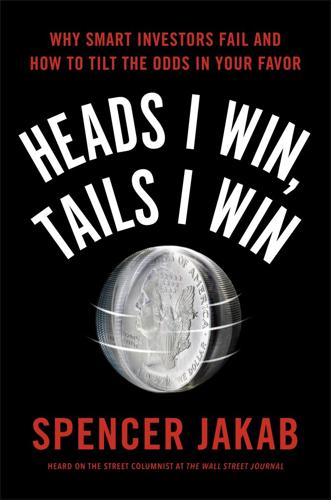
Heads I Win, Tails I Win
by
Spencer Jakab
Published 21 Jun 2016
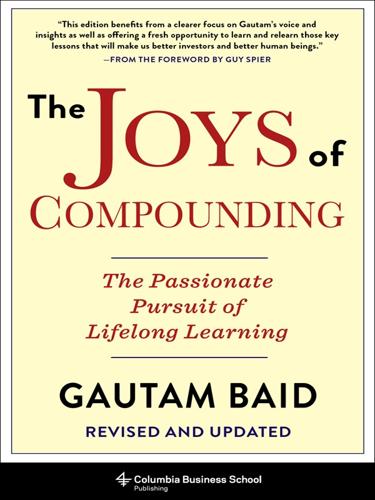
The Joys of Compounding: The Passionate Pursuit of Lifelong Learning, Revised and Updated
by
Gautam Baid
Published 1 Jun 2020
Every single dollar spends the same, and investors should strive to achieve the biggest bang for their buck from every single dollar invested. Use a high hurdle rate when assessing any potential investment opportunity. Be unreasonable. You often hear investors making irrational statements like “I am happy to hold this stock because I bought it at a lower price,” even if the long-term appreciation potential from the current price is poor. Anchoring bias is powerful, and it occurs automatically, at a subconscious level. An effective way to counter this bias is to mentally liquidate your portfolio before the start of every trading day and ask yourself a simple question: “Given all the current and updated information I now have about this business, would I buy it at the current price?”
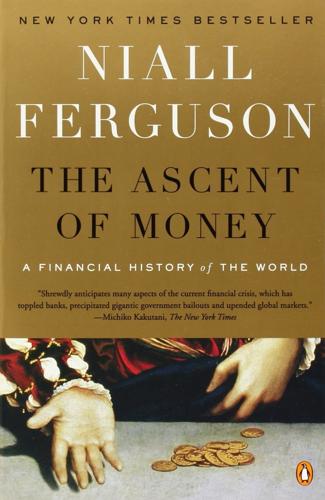
The Ascent of Money: A Financial History of the World
by
Niall Ferguson
Published 13 Nov 2007
In 1924 John Maynard Keynes famously dismissed the gold standard as a ‘barbarous relic’. But the liberation of bank-created money from a precious metal anchor happened slowly. The gold standard had its advantages, no doubt. Exchange rate stability made for predictable pricing in trade and reduced transaction costs, while the long-run stability of prices acted as an anchor for inflation expectations. Being on gold may also have reduced the costs of borrowing by committing governments to pursue prudent fiscal and monetary policies. The difficulty of pegging currencies to a single commodity based standard, or indeed to one another, is that policymakers are then forced to choose between free capital movements and an independent national monetary policy.
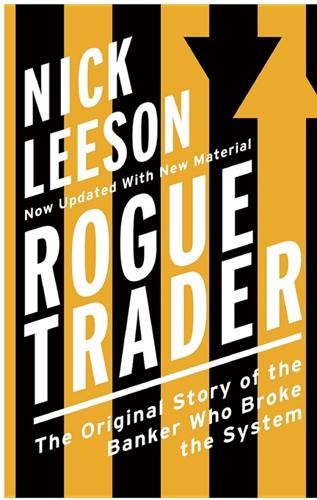
Rogue Trader
by
Nick Leeson
Published 21 Oct 2015
We were watching the September futures contracts on the Nikkei 225 index, which is calculated from the fluctuating value of an underlying ‘basket’ of shares – rather like the Dow-Jones index or the ‘Footsie’ 100. Futures contracts enable you – for the cost of a small ‘margin’ payment up front – to buy or sell this basket of shares at a given price in the future, typically anchored around four dates: the ends of March, June, September and December. Given the uncertainty of future prices, the value can move around wildly as people take different views about how the Nikkei share index itself might trade. The futures contracts and the index move in broadly similar lines, but the time gap and the leverage in the futures market means that the futures are far more volatile than the share index itself.
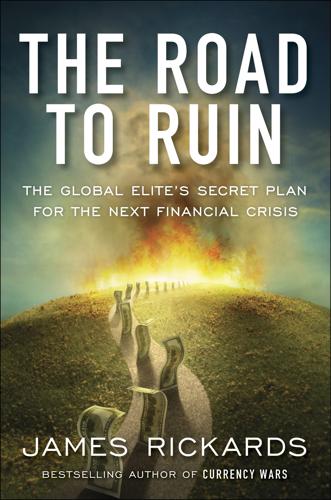
The Road to Ruin: The Global Elites' Secret Plan for the Next Financial Crisis
by
James Rickards
Published 15 Nov 2016

To Serve God and Wal-Mart: The Making of Christian Free Enterprise
by
Bethany Moreton
Published 15 May 2009
Arkansas, Wal-Â�Mart’s home state, passed one of the first “right-Â�to-Â�work” laws in 1947; by 1954, the entire South had enacted such legislation.11 When it came time to select sites for military bases and war contracts, the conservative conÂ�gresÂ�sional coalition made its power felt as well. Jesse H. Jones’s lieutenant at the Reconstruction Finance Corporation—a zealous supporter of the free market from Houston—shaped the postwar sell-Â�off of federal assets to private companies at bargain-Â�basement prices.12 This infrastructure anchored the Sun Belt’s dominance of the high-Â�tech “clean development” of the Cold War—NASA in Texas and Florida; Hughes Aircraft in Orange County, California; Lockheed-Â� Martin in Cobb County, Georgia; the Air Force Academy in Colorado Springs. The Cold War defense industry and its single guaranteed client, the federal government, provided a reliable mechanism for redistributing national wealth to the South and West.13 These high-Â�tech industries in turn supported a secondary sector of serÂ�vice, entertainment, and recreation: McDonald’s and Disney from California; the retirement industry in Florida, Arkansas, and Arizona; Blockbuster Video from Dallas; the country-Â�music industry in Nashville and Branson; and, of course, Wal-Â�Mart in Bentonville, discount commissary to the Sun Belt boom economy.

The Millionaire Fastlane: Crack the Code to Wealth and Live Rich for a Lifetime
by
Mj Demarco
Published 8 Nov 2010
As a business without one, you're adrift in a sea of me-too businesses without a rudder, unmoored to the trade winds of the marketplace. USP-less businesses offer nothing distinct, nothing unique, no benefit, no logical reason that someone should buy from them other than hope or circumstance wrapped around a cheap price. Your USP is the anchor to your brand. What makes your company different from the rest? What sets your business apart? What will compel a customer to use you over someone else? My USP was powerful: No-risk advertising. If we send you nothing, you pay nothing. Advertisers joined by the truckload because they were tired of advertising with the Yellow Pages, which offered this risk proposition: “Pay us $5,000 upfront, then hope and pray.”

Kiln People
by
David Brin
Published 15 Jan 2002
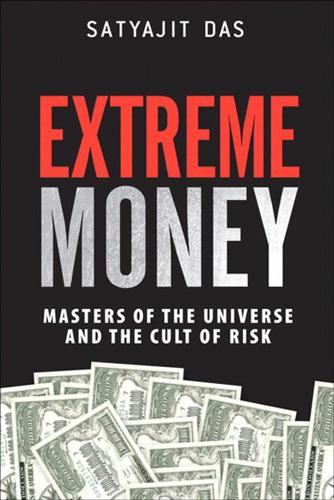
Extreme Money: Masters of the Universe and the Cult of Risk
by
Satyajit Das
Published 14 Oct 2011
As the supply of CDS contracts was not restricted by the amount of Greek debt, hedge funds and other rubber-necked financial accident voyeurs joined the party, looking to make profits. Dealers in CDSs made large spreads from standing in between the buyers and sellers. As with all insurance, higher risks mean higher premiums. The CDS markets became a visible benchmark of Greece’s problems. The price of insurance was not anchored to the real underlying risk or the public finances of Greece. Traders were not interested in whether Greece was likely to default or in protecting themselves from this risk. They just kept beating the Greek piñata. Traders pushed around the thinly traded insurance contracts, making money from the volatility.

The Future of Money: How the Digital Revolution Is Transforming Currencies and Finance
by
Eswar S. Prasad
Published 27 Sep 2021

Valuation: Measuring and Managing the Value of Companies
by
Tim Koller
,
McKinsey
,
Company Inc.
,
Marc Goedhart
,
David Wessels
,
Barbara Schwimmer
and
Franziska Manoury
Published 16 Aug 2015
In the real world, the share prices of cyclical companies are less stable than the example in exhibit 33.1. Exhibit 33.2 shows the earnings per share (EPS) and share prices, both indexed, for 15 companies with a four-year cycle. The share prices are more volatile than the DCF approach would predict—suggesting that market prices exhibit the bias of anchoring on current earnings. How can this apparent anomaly be explained? We examined equity analysts’ consensus earnings forecasts for cyclical companies to see if they would provide any clues to the volatile stock prices of these companies. What we found surprised us. Consensus earnings forecasts for cyclical companies appeared to ignore cyclicality entirely.